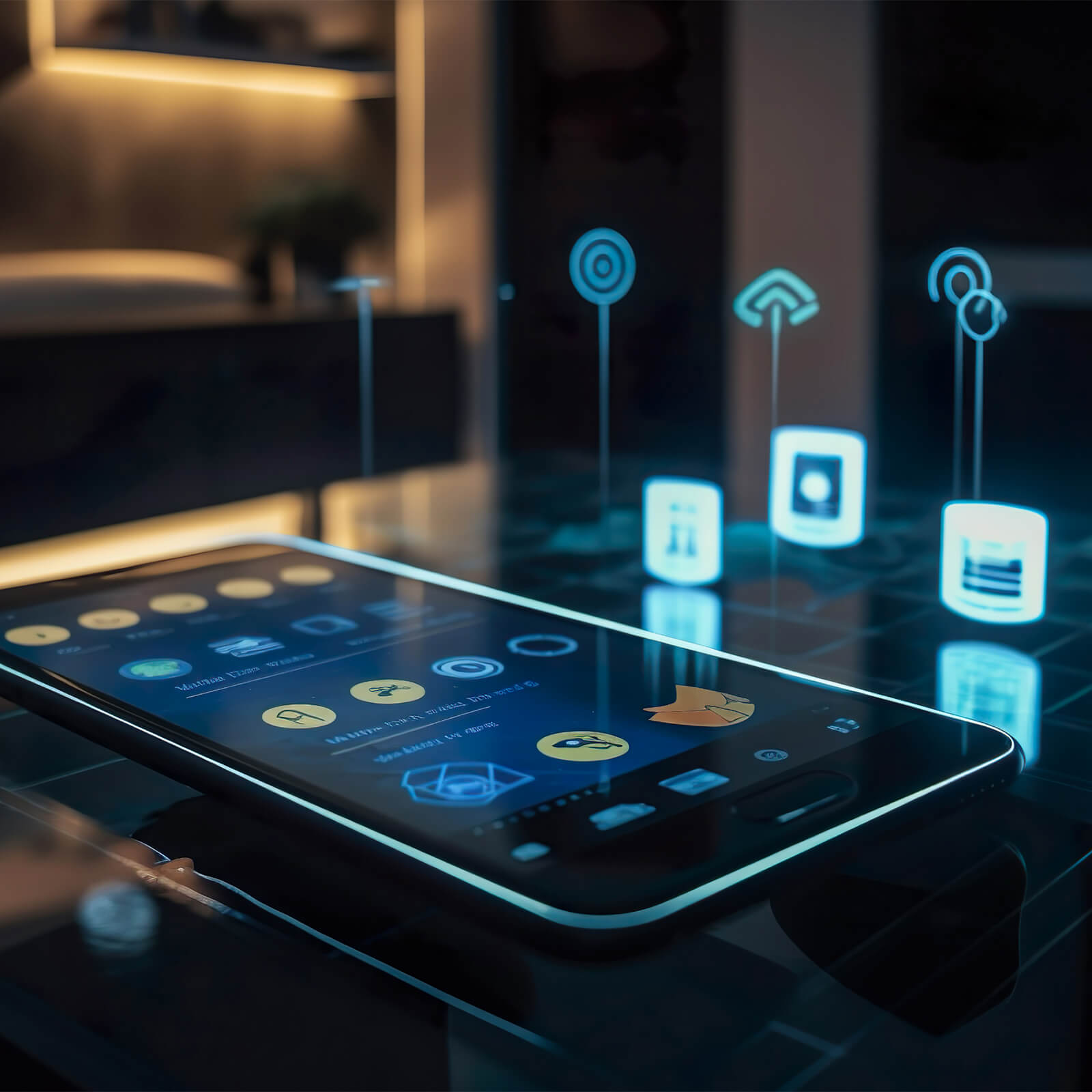
We are at an age where speed and adaptability matter the most. The purpose of technology is to make our lives convenient and safer. While the Internet of Things (IoT) is making revolutionary inroads into all businesses, data transfer rates often become a hindrance. The advent of 5G connectivity is the game changer, modifying our ways of handling IoT and data transfer. 5G networks increase the speed of data transfer and communication between devices and data centers while cutting down costs and reducing latency drastically. As per MarketsAndMarkets, the global 5G and IoT market are expected to hit 6.3 billion in 2025 in comparison to 700 million in 2024, the fifth generation of connectivity brings a wave of change to businesses and the IoT ecosystem.
4G versus 5G for IoT
5G is the successor of 4G, the fourth generation of mobile connectivity. Contrary to the popular belief that 5G is just a slight upgrade of its predecessor, that’s not the case. 5G offers a substantial increase in the data transfer speed while drastically lowering the latency and increasing the support to a vast number of connections. 5G acts as a game changer in the world of cellular networks.
The primary benefit of 5G for IoT is the speed. While a 4G network provides a download speed of up to 150Mbps at the most, 5G offers a speed of 1 – 10 Gbps. Another crucial difference is the infrastructure. While 4G requires cell towers as its transmission base, 5G uses small cell technology, and operators deploy it as boxes on streetlights or tall buildings. Latency often poses challenges to IoT devices. The 5G network reduces the latency drastically, making it essential for the IoT ecosystem. Additionally, 5G offers 100x more network capacity than 4G, letting more linked IoT devices under the same network.
What does 5G mean for IoT?
5G is the game changer in the IoT ecosystem. With rapid, stable, and more secure connectivity, 5G powers IoT systems to make innovative concepts like driverless cars, AI-powered robots in factories, smart cities, and more.
As 5G rapidly expands and reaches more locations, the excitement across various industrial segments for its use cases is high. All sectors like retail, healthcare, logistics, and life sciences are reaping the benefits of 5G with innovative solutions that leverage the technology.
We generally can classify the usage scenarios of 5G on IoT into three broad categories.
- Massive machine type communications (mMTC)
- Enhanced mobile broadband (eMBB)
- Ultra-reliable and low-latency communications (URLLC)
What does 5G mean for IoT?
Connectivity is the core of an IoT ecosystem. It’s critical to choose the right connectivity, as data streaming depends on its speed and velocity. The connectivity must ensure that it satisfies particular requirements of the IoT ecosystem, which are:
- Power Consumption
- Range
- Reliability
- Flexibility
- Latency
- Bandwidth
But how does 5G enhance the Internet of Things?
Longer battery life
The battery life of the devices is an integral part of the IoT ecosystem. 5G is a perfect fit, as its power saving mode (PSM) at the device paves the way for lesser energy consumption. Optimized signaling processes on the network side, like reduced paging procedures, ensure lower power usage and longer battery life for IoT devices.
Swift data transfer rates
The economic success of the IoT ecosystem relies upon its performance, which depends on how fast it can stream data and communicate with other IoT devices, smartphones & tablets, apps, websites, or data warehouses. 5G offers incredible data transfer speed at 1 – 10 Gbps, which is almost ten times more than the 4G connectivity. With this rapid speed, IoT devices can have seamless data transfer and interaction.
Highly reliable connectivity
With an unseen data transfer speed, 5G makes way for more robust connections and hence, a reliable network option for the IoT ecosystem. IoT devices, particularly devices like locks, security cameras, and other monitoring systems, count on real-time updates with reliable connectivity and a stable network. The 5G internet with high speeds, low latency, and wide coverage becomes an indispensable part of the new IoT revolution.
Network slicing
One of the most promising elements of the 5G network is its ability to create virtual networks, leading to the creation of subnets with diverse network traffic priorities. The subnets come in handy while handling emergency tasks, such as in robot-assisted surgery and prioritizing the transmission even when the network capacity is at the maximum.
Low latency
Latency is the enemy of IoT ecosystems. 5G drastically reduces the latency of networks when compared to its predecessor, 4G. Hence, the delay between sending a signal from one point to another is lower. 5G has a latency of 1-10 milliseconds compared to 4G’s 50 milliseconds. The low latency is perfect for complex applications like self-driving cars, smart factories, and AI-assisted surgeries.
5G and IoT use cases across industries
AI to improve traffic control
With governments across the globe building smart cities, the IoT ecosystem plays a vital role in controlling traffic. A smart city deploys a network of cameras and sensors that help in reducing the number of accidents and assist passengers to find parking spots. Moreover, the possibility of driverless cars becoming a reality is coming true.
But what’s the role of 5G networks in this? The latest generation of cellular networks, along with IoT, powers the communication of automobiles with one another and their surroundings. Communication and analytics using artificial intelligence (AI) aid in this process, hence, preventing collisions and creating more effective traffic patterns.
Retails gets smarter
Retail stores are evolving for good, getting a digital makeover in all aspects. Aided by new-age technologies like augmented reality (AR) and virtual reality (VR), retail stores amplify the customer experience to the next level, helping you try on products virtually. For example smartphones assists you to particular aisles in a supermarket to find your desired goods.
Smart tags and digital signs are a few of the IoT devices in the play that amplifies the shopping experience. The data center analyzes the information from the IoT devices sent via 5G communications to create a personalized shopping experience for the customers.
Smarter supply chain
IoT plays a significant role in controlling the supply chain, casting its influence on manufacturing and logistics. Factories and warehouses deploy 5G and IoT devices for inventory control and tracking the components, goods, and equipment throughout the cycle. 5G offers its networking capacity to track a product from its manufacturing stage to the delivery, helping the vendor understand the shipment statuses and generate reports. These supply chain integrations of 5G + IoT help companies cut down on costs, reduce their product loss rate during transit, and improve customer satisfaction.
Smart cities and buildings get powerful
Smart cities and buildings are the best examples of IoT ecosystems and 5G mobile connectivity. With the number of connected devices multiplying, smart cities and buildings install more sensors to cover wider areas. The sensors and IoT devices generate a bulk volume of information that 5G transmits to the data centers for analytics. Leveraging 5G’s greater network capacity, range, speed, and network slicing capabilities, the communication between connected IoT devices is more powerful.
Conclusion
IoT is casting its impact on all industries. With more connected devices in action, 5G is the best choice to boost the power of IoT. Having doubts about how 5G + IoT can impact your business? Let’s talk to take a step further in this journey.
Case Studies
Let our work do the talking
Learn about the instances where we were able to create an impact, raising the bar on the standards we set for ourselves.

PiServe — Revolutionizing the versatility of technology in the corporate world
Curated Technologies. Design at Heart. Rapid business Transformation
Insights
The information technology times
Have a read on groundbreaking figments of imagination of the brightest minds that have been brought to life.
How can we help you?
Get in touch and let’s find out how we can curate our offerings to match your organization’s needs.
Get in touchSign up for our latest insights.
Never miss an insight. We’ll email you when new articles are published.
Subscribe.
Thanks for subscribing to PiServe Insights.
Please fill in the details.









